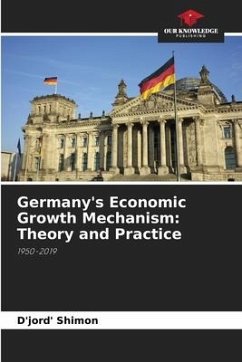
Growth Mechanism of the German Economy: Theory and Practice
1950-2019
Versandkostenfrei!
Versandfertig in 6-10 Tagen
53,99 €
inkl. MwSt.

PAYBACK Punkte
27 °P sammeln!
Growth mechanism determines not only the volume of output but also price formation, income distribution, and accumulation. Setting out from a Kaldorian approach to technical progress, the Hungarian economist György Simon, Jr. reveals and analyses the main growth regularities in the post-war economy of the Federal Republic of Germany. The investigation relies on a theoretical framework comprising basic aspects of economic mechanism, such as production and growth, equilibrium prices, and capital, profit, and wage formation. The relevant policy issues cover the problems of mobilisation of intern...
Growth mechanism determines not only the volume of output but also price formation, income distribution, and accumulation. Setting out from a Kaldorian approach to technical progress, the Hungarian economist György Simon, Jr. reveals and analyses the main growth regularities in the post-war economy of the Federal Republic of Germany. The investigation relies on a theoretical framework comprising basic aspects of economic mechanism, such as production and growth, equilibrium prices, and capital, profit, and wage formation. The relevant policy issues cover the problems of mobilisation of internal resources and international economic linkages. The author in a model form explains manufacturing growth considering exchange rates and terms of trade. Another function specifies the role of manufacturing in macroeconomic growth. For a supply-side analysis, an endogenous growth model (general, or world model) has been used with a built-in mechanism of technical progress that considers both physical and human capital, as well as time in the role of creative economic activity.












